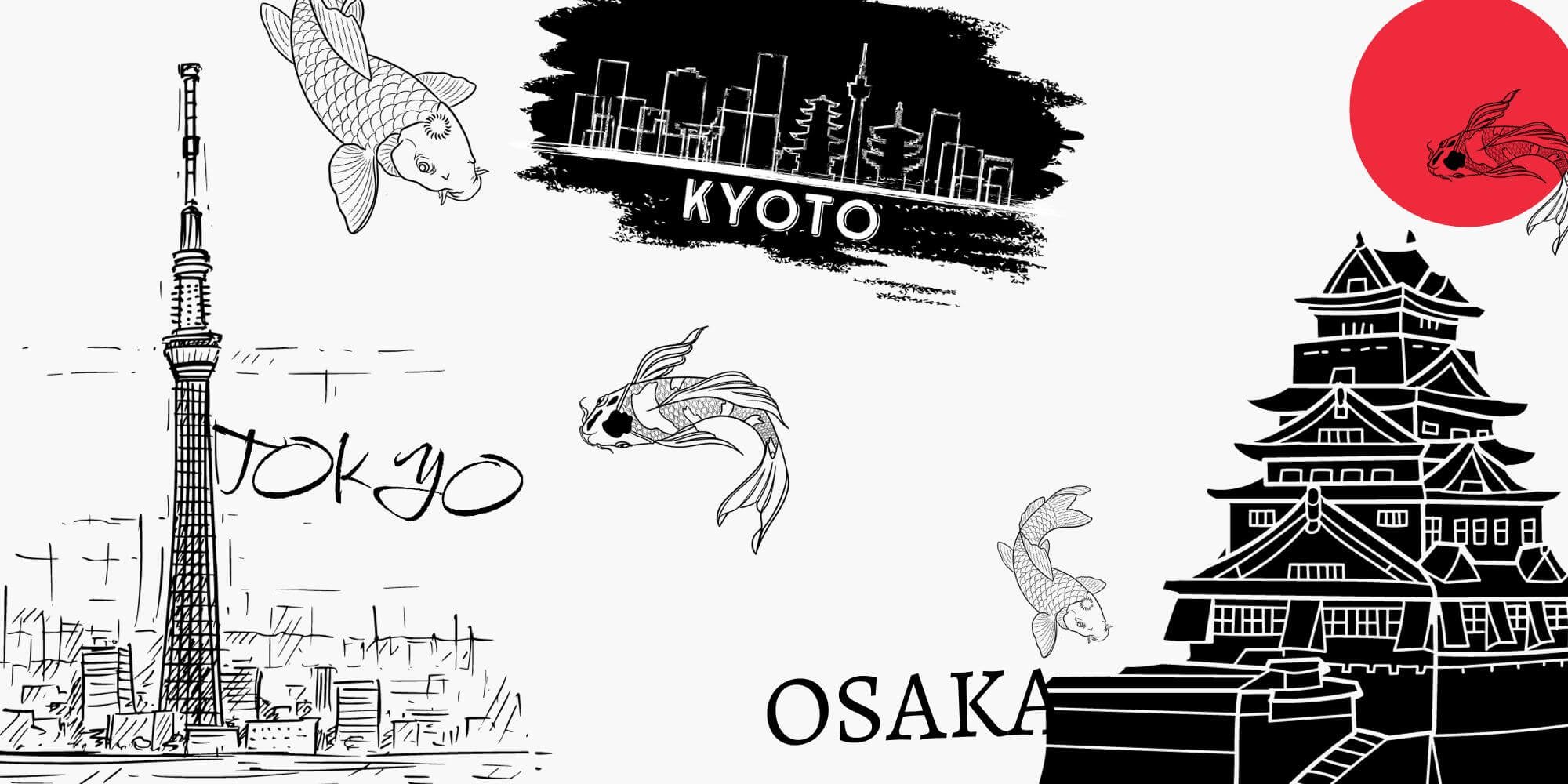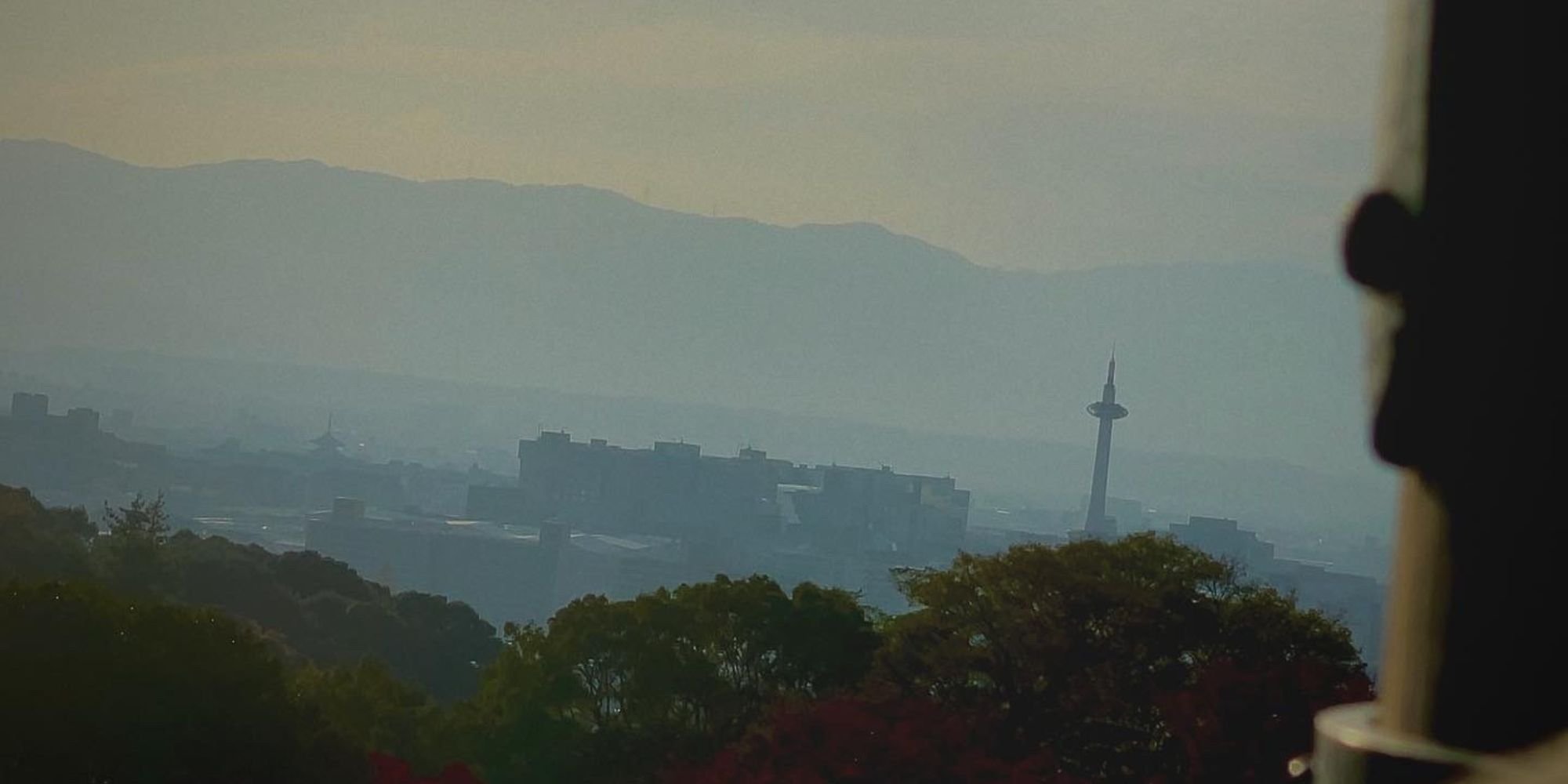Tokyo vs. Osaka (+ Kyoto): 8 Biggest Differences
If you’re planning a trip to Japan, you probably want to know the best cities to visit. While I spend most of my time in Tokyo, I recently spent a couple weeks in Osaka. And it was epic!
I had a great time and discovered some seriously amazing places — and some awesome food. But I also realized how different these two cities can be. So this is my guide on Tokyo vs. Osaka (and Kyoto too).
To get some local insights, I also surveyed a few of my Japanese friends who live in both Tokyo and Osaka.
So these are my top takeaways and experiences between two of the largest cities in Japan.
Let’s do this!
Table of Contents Show
Tokyo + Osaka 101
Let’s get to know Tokyo and Osaka.
Tokyo 101
Tokyo is a popular place. Like, super popular.
In fact, the city saw over 15 million tourists pre-pandemic (and those numbers are expected to return and grow) and is home to nearly 14 million residents.
It’s a city that seamlessly blends the ultra modern with the traditional.
From flashing neon lights to old shoji doors, Tokyo is a dichotomy that can feel both futuristic and nostalgic at the same time.
Tokyo is one of the main prefectures that make up the Kanto area, which also includes Ibaraki, Tochigi, Gunma, Saitama, Chiba and Kanagawa prefectures.
Here are a few more quick facts about Tokyo (and the Kanto region):
Tokyo used to be named ‘Edo’
The Imperial Palace is in the center of Tokyo
Tokyo is made up of 23 special wards, 39 municipalities and 26 cities
There are over 25,000 beauty salons in Tokyo (the highest in Japan)
Explore more:
➤ Essential Tokyo Travel Tips
Osaka 101
Osaka is about a 2 hour Shinkansen ride from Tokyo and is Japan’s second largest city. Like Tokyo, it’s also quite busy (just not as busy).
It has a population of around 9 million residents and experienced a little over 12 million tourists in 2019 (again, the pandemic threw things off, so we’ll wait to see the 2023 numbers).
Osaka sits next to Kyoto and Nara, which are popular for their beautiful heritage sites, temples and older buildings. This is probably one of the biggest differences you’ll notice with this area.
Osaka is one of the main prefectures that make up the Kansai area, which also includes Kyoto, Hyogo, Nara, Mie, Shiga and Wakayama prefectures.
Here are a few more quick facts about Osaka (and the Kansai region):
Momofuku Ando created the first instant noodles in Osaka
There’s a highway going through a building in Osaka (Gate Tower building)
Kyoto is the old capital of Japan
The oldest Buddhist temple in Japan, Gango-ji Temple, is in Kansai
Tokyo vs. Osaka (8 biggest differences)
After lots of research and traveling (and pestering my local friends), these are the biggest differences between Tokyo and Osaka I’ve found.
1. Personality
One of the more common differences between Kanto and Kansai (I’ve heard from my friends and other travelers) is about personality.
People living in Osaka are seen as more open, direct, relaxed, optimistic and outgoing.
Of course, that’s not to say that people in Tokyo aren’t those things (or that all people in Osaka are this way). But in general, it’s something you may pick up on.
Even some of my neighbors while staying here in Osaka will say “konbanwa” (good evening) to me as I pass them in the hall. This is something that’s never happened to me in Tokyo.
My local friends also tell me Kansai people are funnier. They make more jokes and a lot of Japanese comedians come from the area. Tokyo, on the other hand, is more serious and business-focused.
I can definitely feel this difference too — especially since I used to work in the center of Tokyo, which is full of suits and people running to trains at all hours of the day.
So personality — see if you can notice this difference while traveling!
2. Some Dialect Differences
Another difference between Tokyo and Osaka is dialect. While both regions speak Japanese (obviously), there are some local language nuances. Namely, Kansai has some unique phrases and lingo that you won’t hear in Tokyo.
Here are a few examples:
“Nandeya nen” (“you’ve gotta be joking!” or “no way!”)
“Kamahen kamahen” (“it’s fine” or “okay”)
“Okini” (“thank you”, although it’s not too common actually)
But if you’re practicing Japanese or preparing a few travel phrases (such as “daijoubu” or “arigatou gozaimasu”), you don’t need to worry about the differences. They’re more subtle nuances you probably won’t notice much unless you’re privy to the language.
Still, dialect is definitely another big difference I notice (and hear about often) between the two regions.
3. Riding the Escalators
This next difference may feel insignificant, but it’s something that’s actually front and center (for me, at least).
I’m so used to standing to the left side of the escalator in Tokyo (so the right side is clear for people to walk up), that I sometimes forget this point.
In Osaka (and Kansai), people stand on the right side of the escalator, leaving the left side open for people to walk up.
It’s opposite and it’s subtle — but it’s worth mentioning.
So if you’re visiting Osaka, make sure you’re standing in the right place (pun intended) so others can pass you.
Usually, you can just follow the crowd though.
4. The Size
While Osaka is Japan’s second largest city, Tokyo is still number one. And I feel this difference.
From the trains being more packed (in more places and more often) to the geographical size of the cities, Tokyo is larger.
Actually, according to U.S. News, Tokyo is the largest city in the world (but Osaka still ranks tenth). There are more people, more buildings and more trains.
Even the busiest train station in the world is located in Tokyo (Shinjuku station).
So yea, Tokyo is big.
But don’t let this scare you. There are plenty of peaceful areas and the people in Japan are incredibly warm and welcoming, making things feel much more intimate and chill.
Despite the large size, both Tokyo and Osaka are safe, simple and convenient places to visit or live.
Explore more:
➤ Fascinating Facts About Japan
5. Cost + Economy
One thing I noticed when staying in Osaka after Tokyo was the slight cost difference. While Tokyo is actually pretty affordable, Osaka can be even moreso.
The biggest price difference I’ve noticed is with accommodation fees and some consumer goods.
While a lot of items are actually pretty close in price (such as using the trains), Osaka is generally cheaper to live and stay in.
You can compare and contrast more specific items using Numbeo’s itemized list here, but for me, living costs also depend a lot on lifestyle and travel habits.
For example, Tokyo simply has more things to do (many of which are more costly). So you could easily end up spending more money just on attractions.
On a related note, the economies in Tokyo and Osaka are also quite different.
For example, Kabutocho (Japan’s largest financial district) is headquartered in Tokyo and according to the Tokyo Metropolitan Government, the city is a main driver for Japan’s economic growth.
Put another way, Tokyo is the economic and political center of Japan.
I also feel that Tokyo’s work ethic is more serious. Like I said above, I definitely see way more suits in Tokyo — although, maybe I just haven’t explored Osaka’s business areas enough.
Still, the economy and work ethic differences are two points my Japanese friends have also highlighted (and one of those friends is a company owner in Tokyo who grew up in Kansai).
So there’s definitely something there.
6. The General Vibe + Aesthetic
One of the first things I noticed between Tokyo and Osaka was the general vibe and aesthetic were unique.
Kansai and Kanto hit different.
For example, in Osaka, there are a lot more giant mascot-like decorations (like dragons or food) plastered on buildings and above entrances.
You can see what I mean in the image above.
While there are a lot of aesthetic similarities between Tokyo and Osaka (such as izakayas and lanterns), these building ornaments and designs are really unique to Osaka
This architectural point really gives Osaka its unique flair. It’s hard to explain totally, but I get a very different “feel” in Kansai.
This difference is likely a combination of everything on this list (the people, the more relaxed atmosphere, the buildings…), but these visual points are a big part of it.
So if you’re visiting both Kanto and Kansai, definitely pay attention to the aesthetics and the vibe — you’ll probably notice how different they are too!
7. Transplants / Residents
Another difference between Tokyo and Osaka are the cities’ residents.
Specifically, Tokyo has lots of transplants (those not originally from Tokyo). A lot of residents grew up in other (rural) areas of Japan, but since Tokyo has more opportunities (jobs, universities, etc.), it’s a magnet for transplants.
This creates a unique mix of traits, which could contribute to the more reserved Tokyo personality.
And while the pandemic lessened the number of people moving to Tokyo, numbers have been increasing again, similar to pre-pandemic trends.
And according to World Population Review, Osaka’s population is declining and that’s expected to continue over the next decade as more people move outside the city and as the Japanese population shrinks.
8. Things to Do
One last difference between Tokyo and Osaka is each city offers a totally different experience. Tokyo has lots of unique things to do. But Osaka has its own menu too.
There’s definitely some overlap here, but there are a lot of uniquely Kanto or Kansai things to know. Here are some examples:
Kanto has more high-end experiences and architecture
Kansai offers more history (with Kyoto and Nara)
Tokyo has Disney (and Disney Sea)
Osaka has USJ (Universal Studios Japan)
Tokyo has teamLab (indoors)
Osaka has teamLab (open air)
Tokyo is closer to Mt. Fuji
Tokyo is closer to snowboard/ski resorts
Osaka is closer to Hiroshima and Shikoku (closer, but still a bit far)
What About Kyoto?
This is from Kiyomizu temple in Kyoto. It’s a bit busy and uphill, but the views are totally worth it.
Ahhh Kyoto — a beloved city with dream-like sites that feel like a trip back in time. Let’s not forget about this area.
The biggest difference between Tokyo, Osaka and Kyoto is that Kyoto has a lot more older temples and traditional sites to see.
There are more wooden buildings (many of which have been beautifully renovated), temples and shrines and traditional Japanese aesthetics.
While Kyoto is actually a pretty big city, it’s not nearly as big as Osaka or Tokyo. There are essentially no skyscrapers or tall buildings in this historic hub (aside from Kyoto tower, which you can see in the image above).
So when comparing Kyoto with Tokyo or Osaka, the biggest things that jump out to me are the city’s size (in population and geography), things to do and the general vibe.
Later ✌️
While both Tokyo and Osaka offer some similar Japanese experiences (such as kimono wearing or enjoying a high ball at an izakaya), the two cities definitely have their own personality.
From architecture, things to do and even local dialect, Kanto and Kansai offer visitors a totally different Japanese experience.
If you love heritage sites and want to experience the relaxed atmosphere of Osaka, then Kansai is definitely your choice.
But if you want more modern luxury and a larger list of things to do, then Tokyo may be a better option.
Either way, the two cities are only about 2 hours from each other (by Shinkansen), so you can easily squeeze time in for both if you’re staying in Japan for some time.
Want More? Nice. Here’s More.







